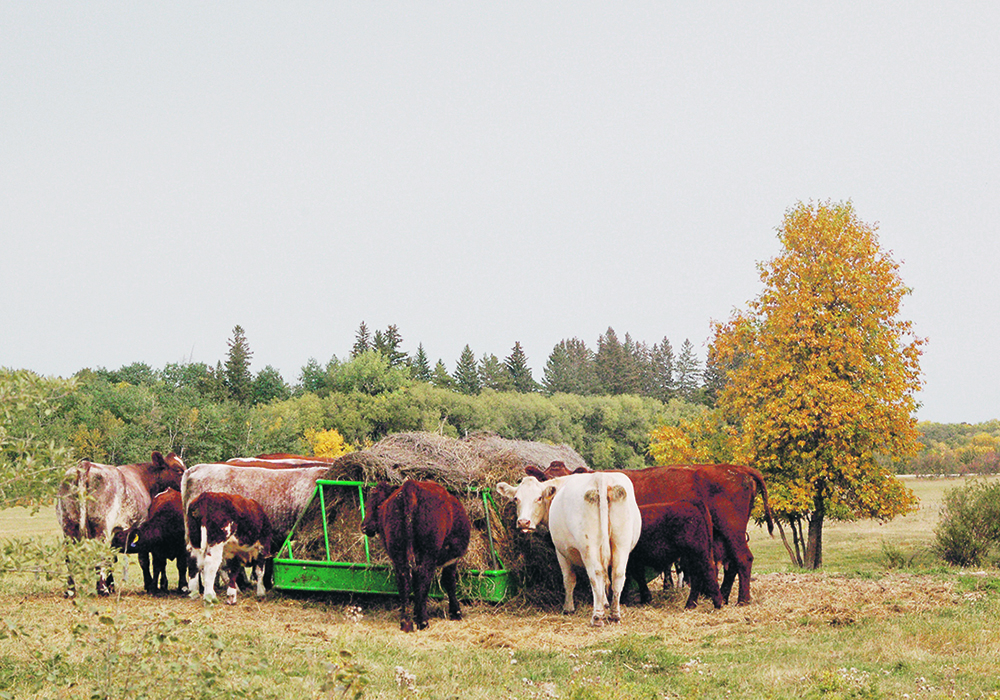There was lots of talk about the supply chain when the COVID-19 pandemic exploded in March 2020.
Between agriculture, the transportation network and grocery stores, things kept ticking along and it seemed local products saw fewer supply interruptions. Meat fell into short supply when the large packing plants closed, but that was short lived.
Less publicized, however, was a possibility for the Canadian cattle herd to experience a supply shortage of pour-on (ivermectin) parasite treatment.
One Canadian company managed to see us through with some inventory, reliable suppliers and a bit of ingenuity.
Read Also

Beef check-off collection system aligns across the country
A single and aligned check-off collection system based on where producers live makes the system equal said Chad Ross, Saskatchewan Cattle Association chair.
How did that happen? The main carrier in ivermectin-type, pour-on products is isopropyl alcohol. The same ingredient is used in hand sanitizers, disinfectant wipes and other cleaning products that became heavily in demand when COVID 19 hit.
The Canadian company Solvet sources its isopropyl alcohol from the largest manufacturer in Canada, out of Sarnia, Ont. This manufacturer was inundated with requests for product to use for human health purposes and it rightly looked after those needs first.
At one point, the company would have run out but it managed to maintain some supply of isopropyl for pour-on treatments by securing another supplier to get them through the shortfall.
All normal supply should resume in January.
On farms and ranches, having some carryover inventory on most medical supplies is critical. That runs contrary to the just-in-time delivery systems we have gotten used to.
In the future, it’s hoped that all players, from big pharma to warehouses to veterinary clinics to farm retail outlets, have become more invested in inventory to help get us through uncertain times we may see in the future.
Pour-on endectocides are convenient and relatively inexpensive for fall parasite control. Without it, we would need to go without control, or come up with substitutes, such as injectable forms of the ivermectin. However, they are less commonly used so there is little product available, and manufacturers can’t boost production at the snap of the fingers.
We would need to use a combination of pour-on products exclusively for lice in combination with dewormers exclusively for internal worms.
It could be done, but not without drastic change.
There is also the problem of allocation when supplies run out. Which clients do suppliers look after and which do they ignore? It takes a lot to keep the supply chain going.
The pandemic showed us how important it is to support local manufacturers, distributors and veterinarians. Producers should keep on-farm inventory of critical products they can’t do without.
Over the years, vaccines, antimicrobials, implants and now ivermectin have had instances of short supply. With cattle production being seasonal, timely inventory is critical.
We often hear about the cost of inventory, but less discussed is the losses a farm can experience if it lacks the necessary treatment at the right time. Results can be catastrophic.
I don’t want anyone to panic buy because there will be enough to go around. However, I suggest producers time the product for lice season in late fall or into winter, and keep some around for next year as a wise investment.
Keep in mind with isopropyl alcohol more in demand, prices may escalate but it was a rather inexpensive product. Watch for potential shortages and communicate with your veterinary clinic, feed supplier or farm store to let them know your inventory needs.
For stable products, having extra inventory seems like a great idea.
Have a great fall everyone and let’s all learn the valuable lessons of this pandemic. Be safe and practise good biosecurity for both the humans and animals under your care.

















